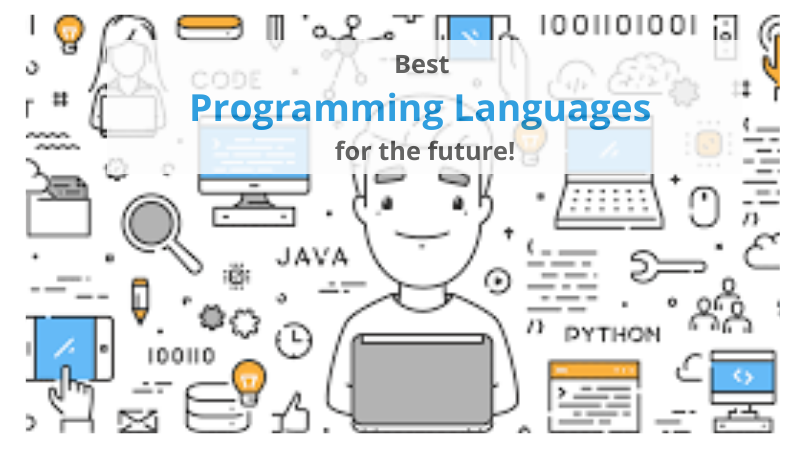
10 Best Programming Languages For The Future!
Apr 10, 2025 6 Min Read 2896 Views
(Last Updated)
In a world where technology is evolving at a rate where every minute, we see a new innovation, one burning question that keeps developers and tech enthusiasts on edge is “Which programming languages are truly future-proof?”
With hundreds of options available and new ones emerging each year, choosing the right language can make or break your career or startup. So, how do you choose the right programming language?
That is why understanding the best programming languages for the future is more critical than ever. To help you with that, we have come up with this article that gives you the 10 best programming languages for the future. In addition to that, we have also provided the list of upcoming languages that will change the future! Let us get started!
Table of contents
- Best Programming Languages for the Future
- Python
- JavaScript
- Java
- Go (Golang)
- Rust
- Kotlin
- TypeScript
- Swift
- Scala
- C++
- Why Are These Languages Important?
- Support for Emerging Technologies
- Scalability and Performance
- Massive Ecosystem and Community Support
- Cross-Platform Development
- Career Longevity
- Developer Experience & Productivity
- Upcoming Languages to Look Out For In The Future
- Julia
- Elixir
- Crystal
- Nim
- Zig
- Conclusion
- FAQs
- Which programming languages are expected to be most in demand in the future?
- What are some emerging programming languages to watch out for?
- Why is Python considered a top language for the future?
- How does Rust compare to traditional languages like C++?
- What factors should be considered when choosing a programming language to learn for future career prospects?
Best Programming Languages for the Future

As we look ahead to the future, certain languages will stand out due to their versatility, performance, and alignment with emerging technological trends. Here’s an in-depth exploration of the top programming languages that are about to shape the future.
1. Python
Python has consistently ranked among the most popular programming languages, thanks to its simplicity and readability. Its versatile nature makes it ideal for various applications, from web development to data science.
Notably, Python’s extensive libraries, such as TensorFlow and PyTorch, have cemented its position as the go-to language for artificial intelligence (AI) and machine learning projects. This widespread adoption of AI ensures Python’s relevance in the foreseeable future.
- Why it stands out: Beginner-friendly syntax, massive community, and a dominant force in AI, ML, and data science.
- Popular uses: Web development (Django, Flask), automation, data analytics, backend development.
- Job demand: Extremely high due to its applications in emerging tech like AI/ML and IoT.
- Top hiring companies: Google, Meta, Netflix, Spotify, NASA, IBM.
In case you are wondering how to learn Python in the best possible manner, there is a way! Consider enrolling in GUVI’s IITM Pravartak certified Self-Paced Python Course that will help you start from scratch and gradually move towards the level where you can write programs to gather, clean, analyze, and visualize data.
2. JavaScript
JavaScript remains integral to web development, enabling interactive and dynamic user experiences. Beyond front-end development, its versatility extends to back-end development through environments like Node.js.
- Why it stands out: The backbone of web development runs on virtually every browser.
- Popular uses: Frontend (React, Vue), backend (Node.js), mobile apps, game dev.
- Job demand: Consistently high due to its role in building interactive websites and applications.
- Top hiring companies: Microsoft, PayPal, Airbnb, Uber, Shopify, Slack.
3. Java
Since its birth in 1995, Java has been a cornerstone in the programming world. Its platform-independent nature, following the “write once, run anywhere” philosophy, has made it a preferred choice for enterprise-level applications.
Java’s scalability ensures its continued prominence in various sectors, including finance, e-commerce, and mobile app development.
- Why it stands out: Platform independence and decades of trust in enterprise and Android development.
- Popular uses: Enterprise software, mobile apps, server-side apps.
- Job demand: Stable across industries that are used by banks, governments, and tech giants.
- Top hiring companies: Amazon, Oracle, Accenture, Infosys, TCS, JPMorgan Chase.
4. Go (Golang)
Developed by Google, Golang addresses the need for efficient, scalable, and concurrent programming. Its simplicity and performance have led to its adoption in cloud services, distributed systems, and large-scale network applications.
Go’s ability to handle concurrent operations efficiently makes it a strong candidate for future developments in cloud computing and serverless architectures.
- Why it stands out: Built for concurrency, performance, and simplicity—perfect for cloud-native apps.
- Popular uses: Cloud computing, microservices, DevOps tools, networking.
- Job demand: Growing fast in cloud infrastructure and backend services.
- Top hiring companies: Google, Dropbox, Uber, Cloudflare, DigitalOcean, Twitch.
5. Rust
Rust is gaining traction for its emphasis on safety and performance. It offers memory safety without a garbage collector, preventing common bugs and ensuring high performance.
These features make Rust particularly suitable for system-level programming, embedded systems, and applications where reliability is critical.
- Why it stands out: Memory safety, zero-cost abstractions, and a focus on performance.
- Popular uses: Systems programming, embedded systems, web assembly.
- Job demand: Increasing as developers look for alternatives to C/C++ with better safety.
- Top hiring companies: Mozilla, Amazon Web Services (AWS), Cloudflare, Discord, Microsoft, 1Password.
6. Kotlin
Kotlin has emerged as a modern, concise, and safe programming language, fully interoperable with Java. Its concise syntax and seamless integration with Java have led to its official endorsement by Google for Android app development.
Beyond mobile development, Kotlin’s versatility is expanding into server-side and web development, indicating a promising future.
- Why it stands out: Official Android language, more concise and modern than Java.
- Popular uses: Android development, server-side apps, cross-platform mobile apps (Kotlin Multiplatform).
- Job demand: High in mobile development, especially in Android-centric roles.
- Top hiring companies: Google, Pinterest, Trello, Basecamp, Netflix, Square.
7. TypeScript
As a statically typed superset of JavaScript, TypeScript enhances code quality and maintainability. Its ability to catch errors at compile-time, along with robust tooling, has led to its widespread adoption in large-scale web applications. TypeScript’s growing popularity suggests it will continue to play a significant role in front-end and back-end development.
- Why it stands out: Supercharges JavaScript with static typing and better tooling.
- Popular uses: Large-scale frontend apps, Angular projects, modern web development.
- Job demand: Soaring among enterprises building scalable and maintainable web apps.
- Top hiring companies: Microsoft, Atlassian, Slack, GitHub, Asana, Bloomberg.
If you are confused between TypeScript and JavaScript, read the blog TypeScript Vs JavaScript: Which is Best?
8. Swift
Introduced by Apple, Swift has rapidly become the language of choice for iOS and macOS application development. Its modern syntax, safety features, and performance optimizations have attracted a large developer community.
As the demand for mobile applications continues to grow, Swift’s prominence in the mobile development landscape is assured.
- Why it stands out: Apple’s official language for iOS/macOS development—fast and safe.
- Popular uses: iOS apps, watchOS, macOS, and even server-side development.
- Job demand: High for Apple ecosystem developers, with mobile app usage rising every year.
- Top hiring companies: Apple, Uber, Robinhood, Instagram, Airbnb, Lyft.
9. Scala
Scala combines object-oriented and functional programming paradigms, offering a scalable language for complex applications. Its compatibility with Java and capabilities for handling concurrent and distributed data processing have made it popular in big data ecosystems, particularly with frameworks like Apache Spark. Scala’s adaptability ensures its continued relevance in data-intensive applications.
- Why it stands out: Combines object-oriented and functional programming—great for big data.
- Popular uses: Data engineering (Apache Spark), web applications, backend systems.
- Job demand: Niche but valuable, especially in data-driven roles.
- Top hiring companies: Twitter, LinkedIn, eBay, Airbnb, The Guardian, Spotify.
10. C++
C++ is a powerful, high-performance programming language widely used in system/software development, game engines, real-time simulations, and high-frequency trading platforms.
Known for its speed, memory control, and versatility, C++ allows developers to build resource-intensive applications where performance is critical.
- Why it stands out: Integral to Microsoft’s ecosystem, used in everything from enterprise software to games (Unity).
- Popular uses: Desktop apps, games, enterprise backend, Windows apps.
- Job demand: Strong in companies relying on .NET infrastructure.
- Top hiring companies: Microsoft, Adobe, Bloomberg, NVIDIA, Intel, Ubisoft.
Read More: How To Learn Any Programming Language? This Will Help
Why Are These Languages Important?

The tech ecosystem is changing at an unprecedented pace, with booming AI, blockchain, cybersecurity, quantum computing, and the metaverse no longer future concepts, they’re happening now.
The programming languages discussed in the above section are not just tools for writing code, they’re gateways to building the technology of tomorrow.
1. Support for Emerging Technologies
- Python, R, and Scala are deeply integrated with tools for AI, machine learning, and data science.
- Languages like JavaScript and TypeScript are now being used in web3 applications and blockchain-based UI/UX.
- Rust and Go are powering the infrastructure for cloud-native applications, edge computing, and IoT systems.
2. Scalability and Performance
- Go is designed for concurrency, making it ideal for high-traffic web servers and cloud applications.
- Rust’s memory safety and lack of a garbage collector help eliminate performance bottlenecks in low-level systems.
- Java and C# continue to be robust, high-performance options for enterprise-grade and financial applications.
3. Massive Ecosystem and Community Support
- Languages like Python, JavaScript, and Java have millions of active developers, open-source contributors, and third-party libraries, making them easy to scale and integrate.
- This means that developers can find solutions faster, hire teams more easily, and maintain codebases with minimal risk.
4. Cross-Platform Development
- Kotlin (with Kotlin Multiplatform), JavaScript, and C# (via .NET MAUI and Unity) allow developers to create apps that run seamlessly across platforms like iOS, Android, desktop, and web.
- Cross-platform capability saves time and development costs, which is vital for startups and fast-growing tech companies.
5. Career Longevity
- These languages dominate job boards and are consistently mentioned in reports by GitHub, Stack Overflow, and TIOBE Index as being in high demand.
- Mastering any of these gives developers access to global freelance markets, startup ecosystems, and enterprise roles.
6. Developer Experience & Productivity
- Languages like TypeScript, Kotlin, and Swift were designed with developer ergonomics in mind, with features like static typing, null safety, and clean syntax that reduce bugs and boost productivity.
- Ruby, although past its prime in the hype, still holds relevance because of the developer’s happiness philosophy and ease of building MVPs.
These languages are the building blocks of digital innovation, they’re being used to build everything from Netflix’s backend to the AI in Tesla’s autopilot.
Upcoming Languages to Look Out For In The Future
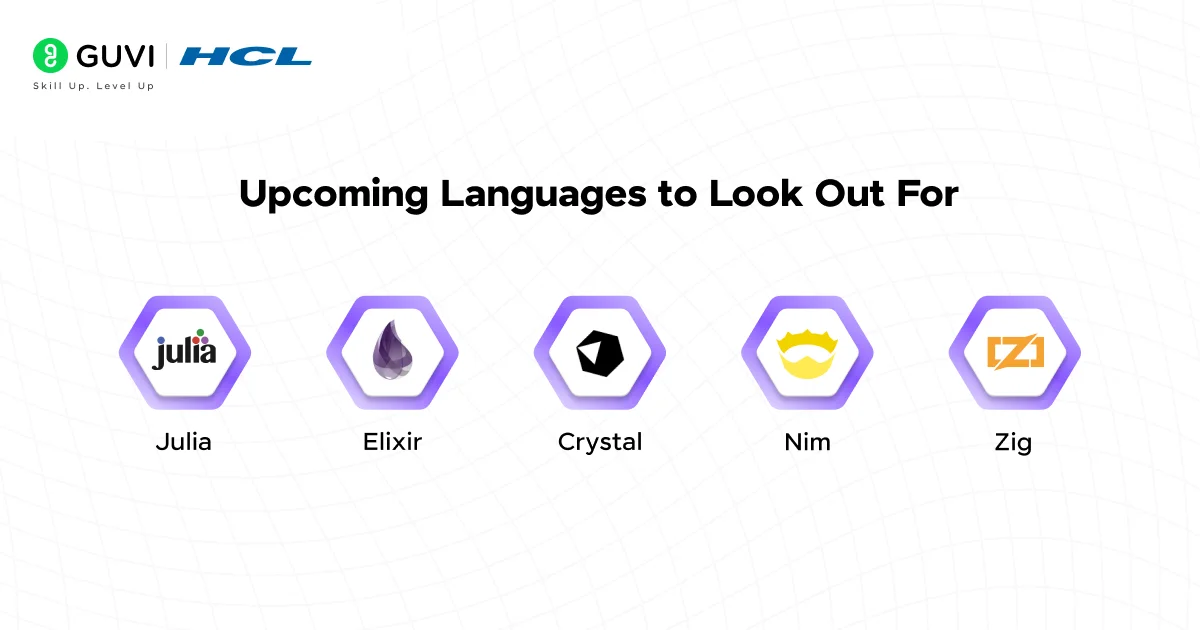
While mainstream languages dominate the tech stack today, there’s a wave of new and lesser-known programming languages making significant strides.
These languages are born out of modern-day needs: better performance, improved safety, easier concurrency, or specific industry verticals like data science and blockchain.
Here are some rising stars to keep an eye on:
1. Julia
Julia is a high-performance programming language built for scientific computing, data modeling, and numerical analysis. With the speed of C and the simplicity of Python, Julia is making strides in industries like finance, space exploration, and machine learning, where heavy computation is the norm.
- Use Case: Numerical and scientific computing, simulations, machine learning.
- Why it’s Promising: Offers the speed of C with the ease of Python, especially suitable for high-performance computing.
2. Elixir
Elixir is a functional, concurrent language designed for building scalable and fault-tolerant applications. Running on the Erlang VM, it’s a go-to choice for real-time systems like messaging apps, distributed systems, and event-driven platforms thanks to its reliability and performance.
- Use Case: Web services and real-time applications.
- Why it’s Promising: Built on Erlang’s battle-tested virtual machine, it offers massive concurrency, fault tolerance, and low-latency performance.
3. Crystal
Crystal offers the elegance of Ruby with the performance of a compiled language. It’s designed to be fast, statically typed, and efficient, making it a solid choice for developers who love readable syntax but also want blazing-fast execution speeds in web or CLI apps.
- Use Case: Web and systems programming.
- Why it’s Promising: A language that looks like Ruby but compiles to fast native code. Ideal for developers who want high performance without switching to C/C++.
4. Nim
Nim is a systems-level language that aims to combine the best features of Python, Rust, and C. With a clean syntax, strong performance, and powerful metaprogramming capabilities, Nim is gaining attention for use cases ranging from game development to high-performance servers.
- Use Case: Systems programming, game engines, web applications.
- Why it’s Promising: Combines Python-like syntax with C-like performance. It compiles to C, C++, and JavaScript, giving it amazing versatility.
- Unique Features: Built-in memory management models, metaprogramming, and efficient concurrency.
5. Zig
Zig is a low-level language designed to replace C with a more modern, safer alternative. It gives developers precise control over memory and system resources, making it ideal for OS development, embedded systems, and performance-critical applications, all without the pitfalls of legacy C.
- Use Case: Operating systems, game engines, performance-critical applications.
- Why it’s Promising: Seen as a modern alternative to C with manual memory management, but safer and more readable.
These languages may not have massive adoption yet, but they’re gaining popularity in open-source communities and bleeding-edge startups that are projected to change the future of technology!
Conclusion
In conclusion, predicting the future of programming languages isn’t about hype, it’s about use cases, community support, and alignment with tech shifts like AI, blockchain, cloud, and edge computing.
If you’re just getting started, Python or JavaScript offers the most approachable and future-proof entry points. For system-level or performance-based applications, look into Rust or Go. Mobile-focused? Kotlin or Swift is your best bet.
No matter which path you choose, staying adaptable and continuously learning is the real future-proof skill.
FAQs
Languages like Python, JavaScript, and Java are anticipated to remain highly sought after due to their versatility and widespread use in various domains, including web development, data science, and enterprise applications.
Emerging languages such as Gleam, Zig, Mojo, Julia, and Rust are gaining attention for their unique features and potential to address modern programming challenges.
Python’s simplicity and extensive libraries make it ideal for machine learning and artificial intelligence, fields that are experiencing rapid growth.
Rust offers memory safety and concurrency features that address common issues in C++, making it a modern alternative for system-level programming.
When selecting a programming language to learn, consider factors such as industry demand, the language’s application domains, community support, and its alignment with emerging technologies like AI, cloud computing, and blockchain.





















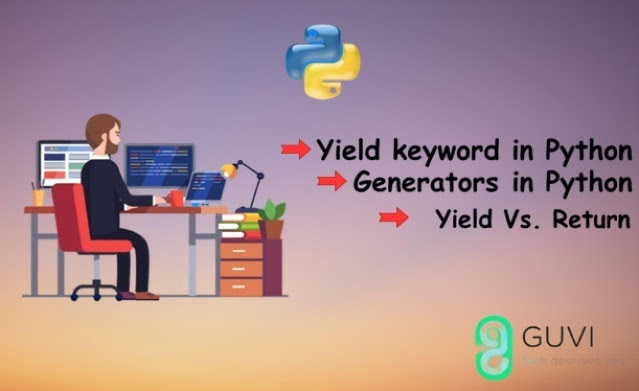
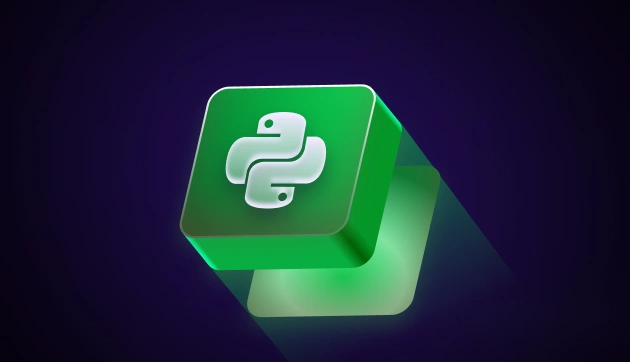
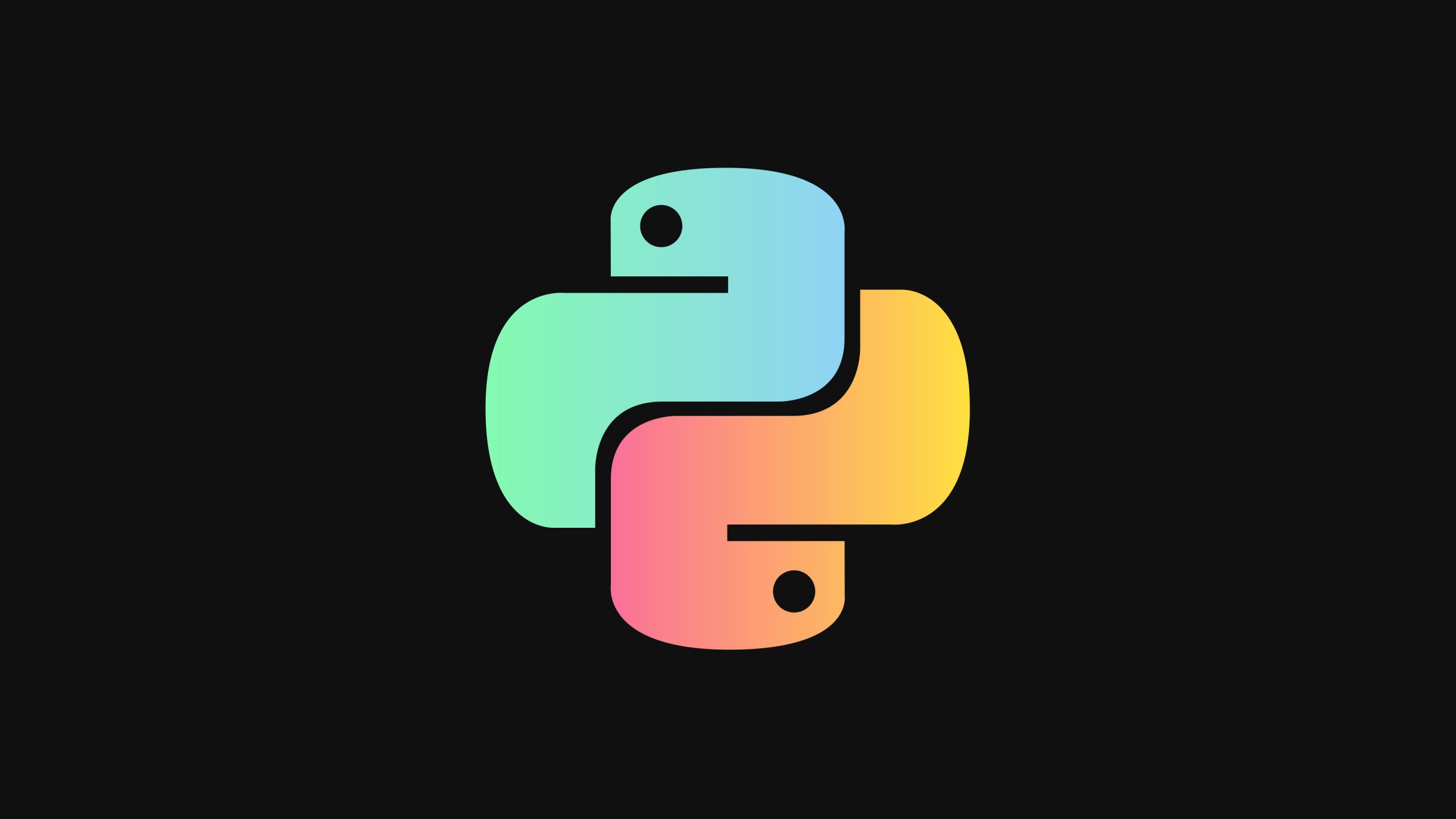
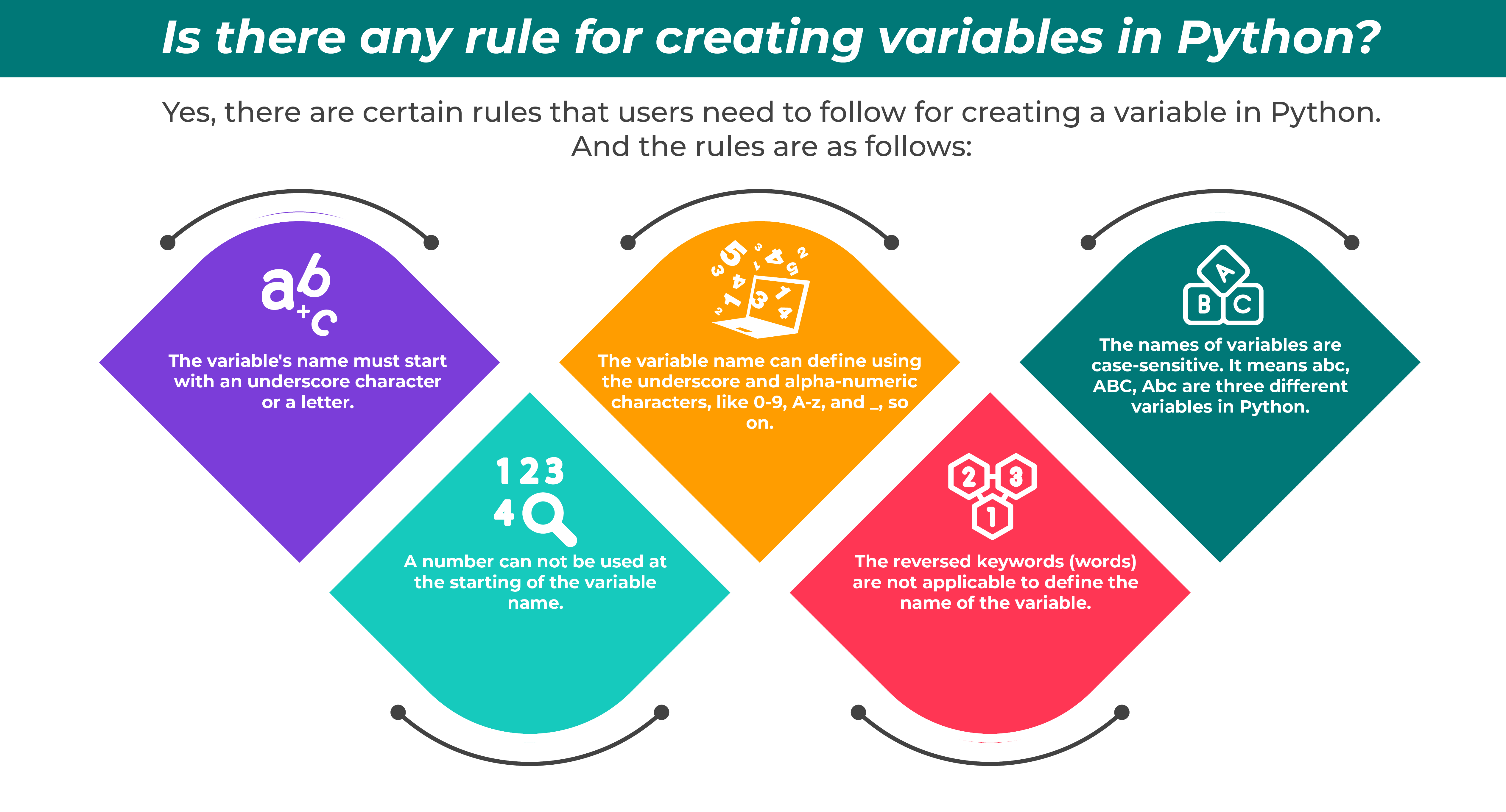


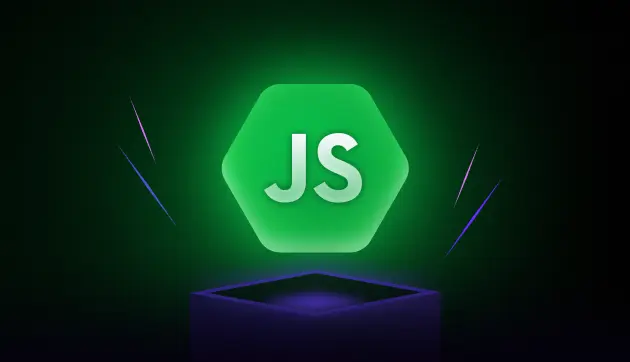


Did you enjoy this article?